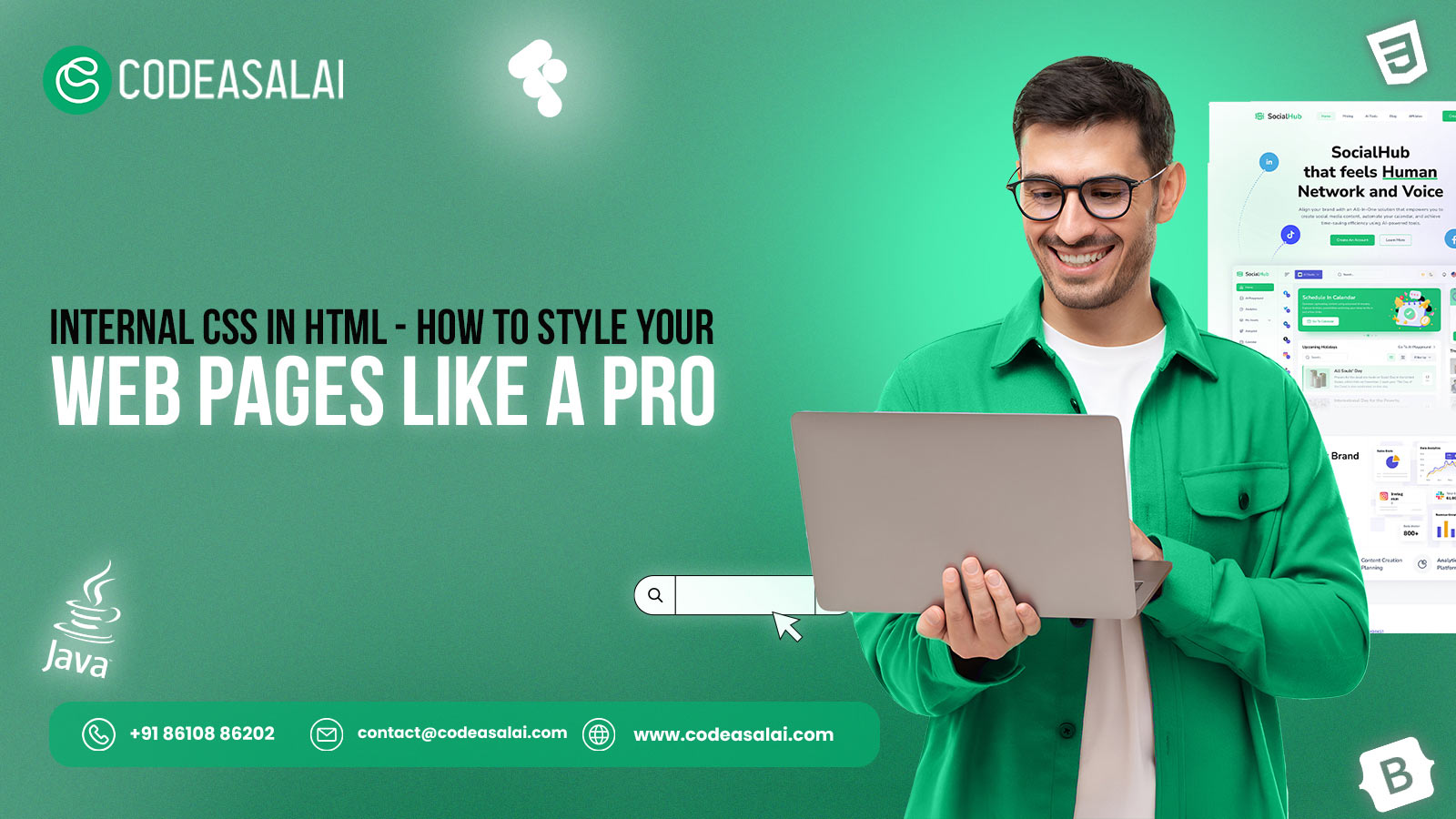Internal CSS in HTML - How to Style Your Web Pages Like a Pro
Mon Feb 24 2025 10:34:01 GMT+0530 (India Standard Time)
When it comes to designing stunning web pages, CSS (Cascading Style Sheets) is the backbone of web styling. While there are multiple ways to incorporate it into your HTML documents, internal CSS provides a powerful way to apply styles directly within an HTML file. If you want to take your web design skills to an advanced level and style your pages like a pro, learning internal CSS is a must-have skill.
This blog will guide you through everything you need to know about frontend development, including its benefits, use case implementation, and best practices. By the end of this guide, you'll be able to design visually appealing web pages with professional-level styling.
What is Internal CSS?
Internal CSS is a method of styling HTML documents by embedding CSS rules directly within the <head> section of an HTML file. This approach uses the <style> tag to define the styles that apply to elements within the same document. Internal CSS allows for centralized styling without the need for an external stylesheet, making it a convenient option for small to medium-sized projects.
Example of Internal CSS:
In the above example, the <style> tag contains CSS rules that define the appearance of <body>, <h1>, and <p> elements.
Why Use Internal CSS?
While External CSS is generally preferred for larger projects, Internal CSS has its benefits in specific scenarios. Let's see some of the reasons why this is useful.
1.Quick Styling for Single Pages
If you need to style a single page without linking an external file, Internal CSS is a great option.
2.No Need for External Files
Since the styles are included within the HTML document, there's no need to manage additional files to make it easier to handle small projects.
3.Faster Rendering for Small Pages
Browsers don't need to fetch an external file, reducing HTTP requests and improving rendering speed for simple websites.
4.Best for Testing and Prototyping
Internal CSS is a handy way to test styles before moving them to an external stylesheet in larger projects.
How to Add Internal CSS to Your HTML File
To use Internal CSS in your HTML document, follow these steps:
- Open your HTML file in a code editor.
- Locate the <head> section.
- Add a <style> tag within <head>.
- Write CSS rules inside the <style> tag.
- Save and open the HTML file in a browser to see the styling in action.
Example:
This approach applies styles only to this specific HTML file, keeping all design aspects in one place.
Difference Between Internal, External, and Inline CSS
Best Practices for Using Internal CSS
While Internal CSS is useful, following best practices confirms optimal performance and maintainability.
- Keep It Organized
Group related styles together and use comments to explain different sections.
- Avoid Overuse
For large-scale projects, move styles to an external CSS file to maintain a clean HTML structure.
- Use Meaningful Class and ID Names
Instead of targeting generic elements, use class ID selectors to apply styles efficiently.
- Leverage CSS Variables
If your styles include repeated values (like colors or fonts), use CSS variables to make changes easier.
Common Mistakes to Avoid
1.Placing Internal CSS Outside the <head>
Internal CSS should always be placed within the <head> section to confirm styles are loaded before the content.
2.Overwriting Styles Unintentionally
Since styles are applied from top to bottom, later rules may override earlier ones. Keep track of your CSS hierarchy.
3.Using Internal CSS for Large Websites
If your site has multiple pages, maintaining internal CSS for each file can be difficult. Instead, use External CSS.
Conclusion
Internal CSS is a powerful way to style HTML documents, especially when working on small projects or single-page applications. While it offers quick implementation and easy maintenance, following best practices to keep your code clean and efficient is important. Because ‘The details are not the details. They make the design.’
If you're starting with web design, mastering Internal CSS will help you understand CSS fundamentals before moving on to External CSS for larger projects. So, experiment with Internal CSS and create visually appealing web pages like a pro.
